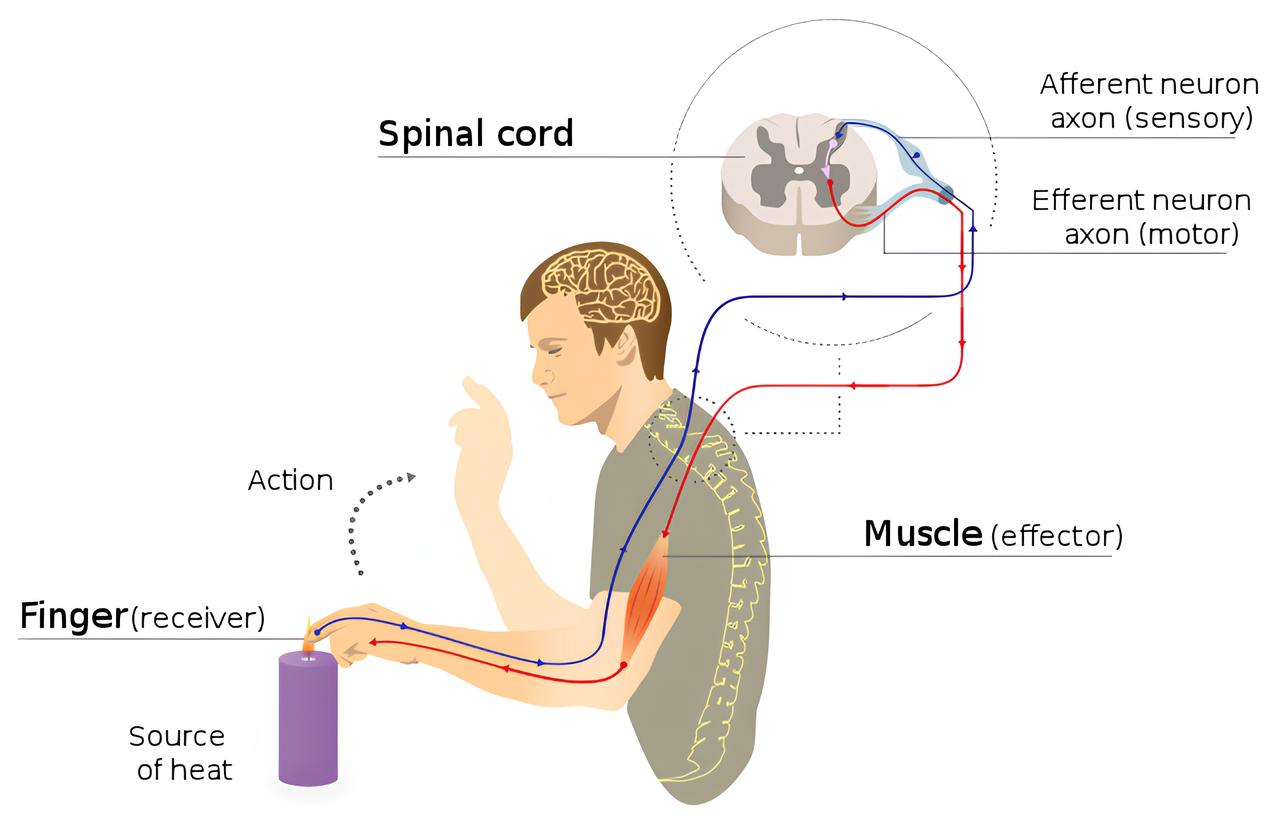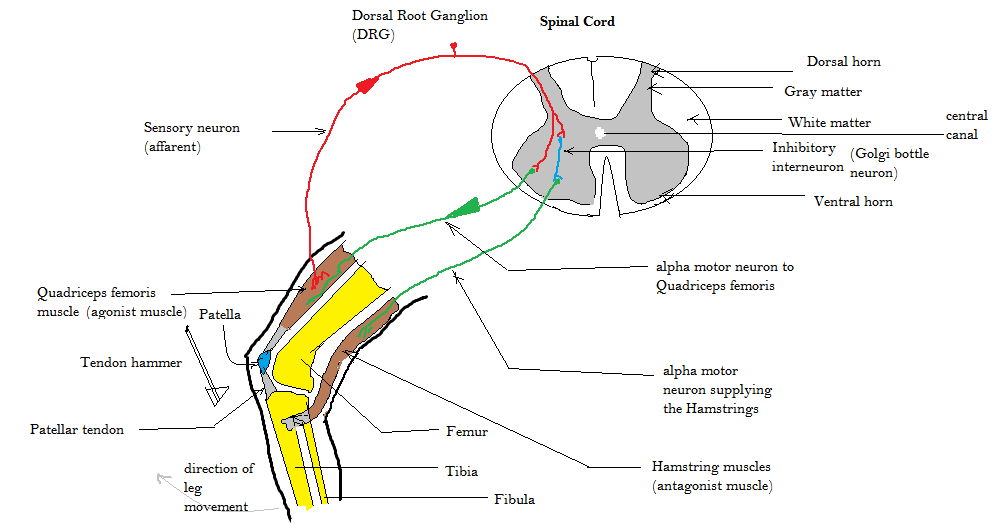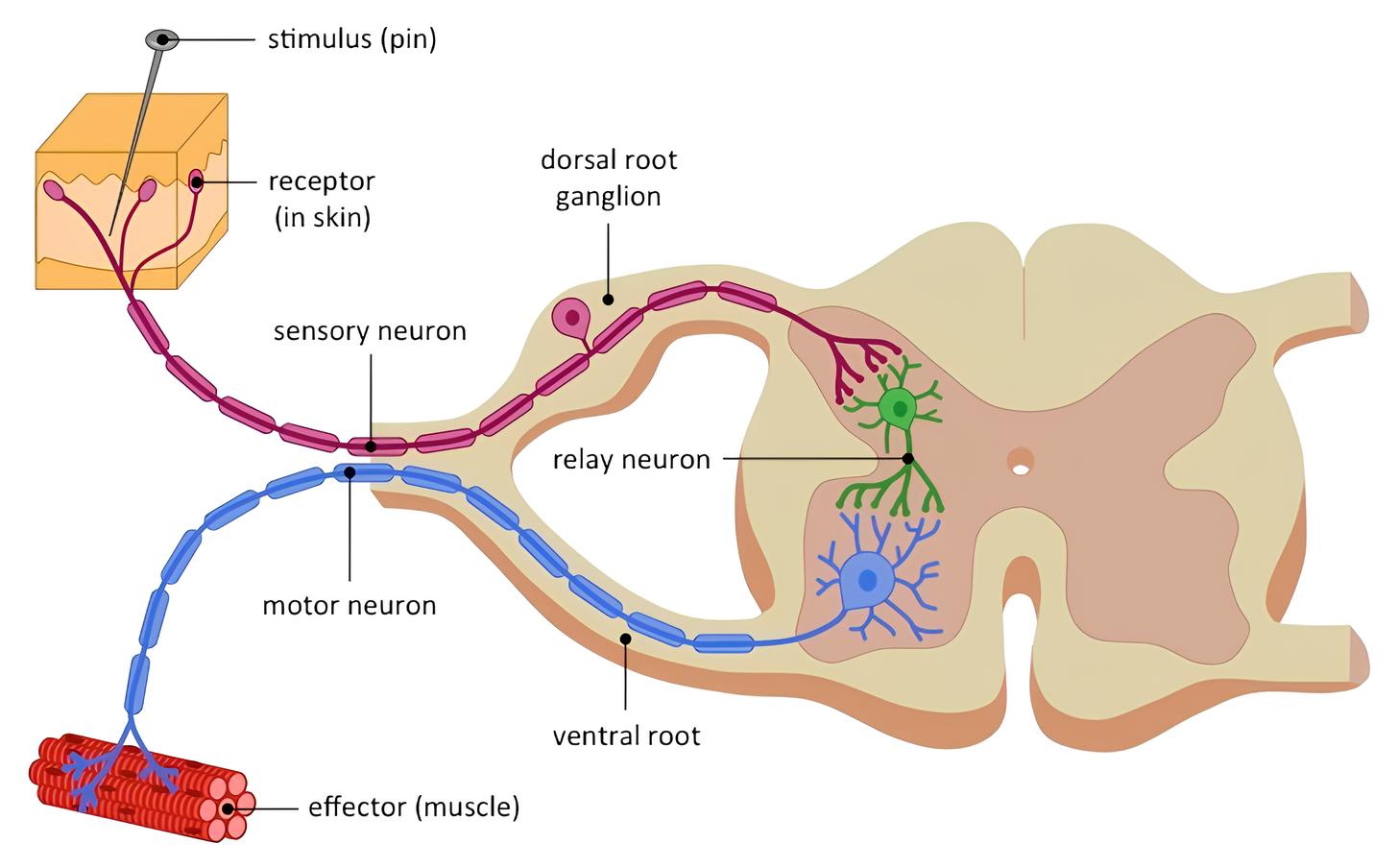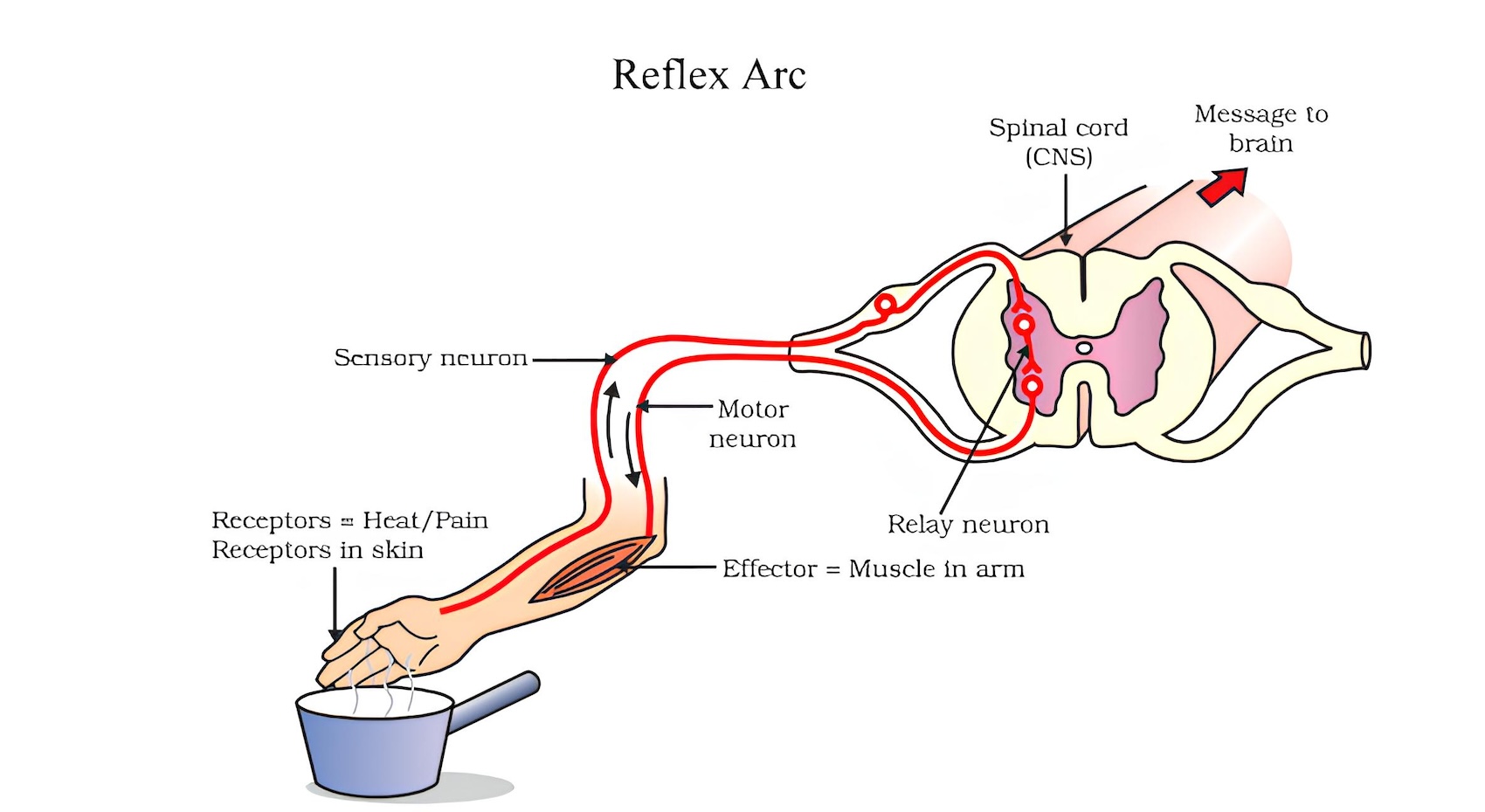The concept of the reflex arc forms a fundamental aspect of our physiological responses. In everyday life, reflexes play an essential role in safeguarding our well-being by enabling swift and automatic reactions to various stimuli. These reactions occur without conscious thought, showcasing the remarkable efficiency of the body’s nervous system. By examining the intricacies of the reflex arc, we can gain a deeper understanding of how our nerves and muscles collaborate to achieve rapid responses that often go unnoticed.
In this article, we’ll explore the mechanics behind the reflex arc, shedding light on how our body’s natural defense mechanisms work in harmony. The nervous system seamlessly coordinates each step from the initial reception of sensory input to the subsequent activation of muscles to ensure quick, protective actions. Understanding this process not only highlights our anatomy but also offers insights into the balance between instinct and conscious control.
Anatomy of the Reflex Arc
The reflex arc’s structure comprises distinct components that collaborate seamlessly to facilitate rapid responses within our body.
Explanation of the Components Involved
- Sensory Receptor
The process commences with specialized sensory receptors that detect external stimuli. These receptors are dispersed throughout the body, ranging from the skin to internal organs. They’re attuned to specific types of stimuli, such as pressure, temperature changes, or pain signals.
- Sensory Neuron
Upon stimulation, sensory receptors activate sensory neurons. These neurons transmit the sensory input as electrical signals to the central nervous system for processing. The efficiency of this transmission ensures rapid communication between the site of stimulation and the brain or spinal cord.
- Integration Center
The incoming sensory signals reach an integration center, which can be the spinal cord or the brainstem. The integration center processes the information quickly, evaluating the potential threat or necessity for action. The integration process involves intricate neuronal networks that allow for rapid decision-making.
- Motor Neuron
Following assessment, the integration center sends out signals via motor neurons. These motor neurons extend from the central nervous system to the effector—usually a muscle or a gland. The transmission of signals from the integration center to the effectors ensures immediate responses.
- Effector
The final step involves the effector—a muscle or gland—that enacts the response. Muscles contract, while glands secrete substances, depending on the nature of the stimulus. This rapid activation of effectors ensures an immediate reaction to the detected stimulus.
Step-by-Step Description of How the Reflex Arc Works
The sequence of events within the reflex arc follows a predefined pattern that ensures swift and protective responses. Beginning with the activation of sensory receptors, the process progresses through the transmission of signals via sensory neurons to the integration center. The integration center swiftly assesses the situation and, if necessary, transmits signals through motor neurons to effectors. As a result, the effectors execute the appropriate response, whether it’s retracting a hand from a hot surface or adjusting balance when stumbling.
The nervous system serves as the central coordinator in the reflex arc, facilitating the rapid transmission of signals and ensuring timely responses to various stimuli. This section delves into the essential functions performed by the nervous system during reflexes.
Nervous System’s Role in Reflexes

The nervous system serves as the central coordinator in the reflex arc, facilitating the rapid transmission of signals and ensuring timely responses to various stimuli.
How Sensory Information is Transmitted
- Sensory Receptor Activation
When a sensory receptor is stimulated, it initiates a series of electrochemical changes within the receptor cell. These changes lead to the generation of an electrical signal, known as an action potential.
- Propagation Along Sensory Neurons
The generated action potential travels along the sensory neuron’s axon—a long, slender extension. This propagation is enabled by the rapid exchange of ions across the neuron’s membrane. The signal travels towards the central nervous system, specifically the integration center.
Quick Processing in the Integration Center
- Efficient Signal Processing
Upon reaching the integration center—either the spinal cord or brainstem—the sensory signal is rapidly processed. Neuronal networks within the integration center swiftly evaluate the incoming information to determine the appropriate response.
- Signal Amplification
The integration center amplifies the signal, ensuring that even weak stimuli are adequately processed. This amplification enhances the sensitivity of the reflex arc, enabling the body to respond to subtle changes in the environment.
The Role of Motor Neurons
- Relaying Signals to Effectors
Once the integration center assesses the sensory input, it triggers a response by sending signals via motor neurons. These motor neurons extend from the central nervous system to the effectors—muscles or glands—responsible for executing the appropriate action.
- Speedy Signal Transmission
Motor neurons are specialized for rapid signal transmission. The axons of motor neurons are coated with a fatty substance called myelin, which facilitates the quick conduction of signals. This ensures that the response is carried out promptly, minimizing delay.
Muscles’ Contribution to Reflexes
Muscles play a pivotal role in the reflex arc, translating the signals initiated by the nervous system into rapid and precise actions. This section explores the essential contributions of muscles to reflexes, highlighting their significance in executing immediate responses.
Activation of Muscles in Response to Motor Neuron Signals
- Muscle Contraction Mechanism
When motor neurons transmit signals from the integration center, they reach the muscles’ motor endplates. These motor endplates contain specialized receptors that bind to neurotransmitters, initiating a cascade of events that lead to muscle contraction.
- Speedy Signal Conversion
The conversion of neural signals into muscular action happens rapidly. Neurotransmitters released by motor neurons bind to receptors on the muscle fibers, triggering the release of calcium ions. This release sets in motion a series of events that ultimately result in the contraction of the muscle.
Types of Reflexes Involving Muscles
- Stretch Reflex
The stretch reflex is a common reflex involving muscles. When a muscle is stretched, specialized stretch receptors within the muscle—known as muscle spindles—are activated. This triggers a reflexive contraction of the muscle to prevent overstretching.
- Withdrawal Reflex
The withdrawal reflex is a protective response to noxious stimuli. When the body detects a harmful stimulus, motor neurons rapidly stimulate the appropriate muscles to withdraw from the source of danger. This reflex acts as a quick defense mechanism.
Importance of Muscle Memory in Reflexive Actions
- Repetition and Reflexes
Reflexes are often refined through repetition. Repeated exposure to certain stimuli can lead to more efficient reflexive responses. This phenomenon is attributed to muscle memory—the ability of muscles to “remember” and respond swiftly to familiar situations.
- Enhancing Precision
Muscle memory enhances the precision of reflexive actions. It allows for smoother and more coordinated movements as the muscles have become accustomed to the specific patterns of contraction and relaxation associated with particular reflexes.
Reflex Arc in Action

Observing the reflex arc in action provides insight into how our body swiftly responds to various stimuli. This section delves into real-world examples and scenarios where reflexes come into play, showcasing their role in ensuring our safety and adaptability.
Examples of Common Reflexes

- Knee-Jerk (Patellar reflex) Reflex
The knee-jerk (patellar reflex) is a classic example of a reflex arc in action. When a doctor taps the patellar tendon just below the kneecap, the sensory receptors in the muscle detect the sudden stretch. This sensory input triggers the reflexive contraction of the quadriceps muscle, causing the lower leg to kick forward.
- Withdrawal Reflex
The withdrawal reflex is another evident manifestation of the reflex arc. When you accidentally touch a hot surface, sensory receptors detect the heat and transmit signals to the spinal cord. Almost instantly, motor neurons stimulate the muscles to contract, causing your hand to swiftly withdraw from the source of heat.
- Pupillary Reflex
The pupillary reflex involves the muscles of the iris in response to changes in light intensity. When exposed to bright light, the pupils constrict to reduce the amount of light entering the eye. Conversely, in dim light, the pupils dilate to allow more light in for improved vision.
Real-World Scenarios Showcasing Reflex Arc’s Role
- Protection and Survival
Reflex arcs play a crucial role in protecting our body from harm. Imagine stepping on a sharp object; your immediate withdrawal is a reflexive action that prevents further injury. Similarly, when you accidentally touch something hot, your reflexive reaction helps avoid burns.
- Adaptation to Changing Environments
Reflexes also assist in adapting to different environments. Consider the rapid adjustment of your eyes’ pupils in response to varying light conditions. This reflex ensures optimal vision regardless of the lighting conditions.
- Swift Responses in Sports and Activities
Reflexes are vital in sports and activities that require quick reactions. Athletes often rely on reflexes to respond promptly to unexpected situations, such as a goalkeeper diving to save a ball or a sprinter reacting to the starting gun.
Reflex Arc vs. Conscious Responses
Comparing the reflex arc to conscious responses offers insights into the distinct mechanisms that govern immediate reactions and intentional actions. This section examines the differences between these two modes of response, shedding light on their respective roles in our interactions with the world.
Differentiating Between Reflexes and Voluntary Actions
- Involuntary Nature of Reflexes
Reflexes are involuntary and automatic reactions triggered by specific stimuli. They occur without conscious intention and are essential for the body’s survival and protection. Reflexes bypass conscious decision-making processes to ensure swift responses.
- Voluntary Actions as Deliberate Choices
In contrast, voluntary actions involve conscious thought and decision-making. These actions are deliberate and require cognitive processing. Intentions, desires, and planning are some of the factors that influence them, allowing for more complex and nuanced behaviors.
Speed and Efficiency of Reflex Arc Responses
- Rapidity of Reflex Responses
Reflexes are remarkably rapid, often occurring within milliseconds of stimulus detection. This speed is possible because reflexes bypass the conscious brain and involve shorter neural pathways. The immediate activation of effectors ensures a quick protective response.
- Reflexes as Preemptive Reactions
Reflexes act as preemptive measures, ensuring the body responds to potential threats before conscious awareness. For instance, when touching a hot surface, reflexive withdrawal occurs before the brain registers the sensation, preventing potential harm.
- Conscious Responses’ Cognitive Load
Voluntary actions involve cognitive processes, necessitating the brain to evaluate, plan, and execute the action. This cognitive load may lead to slower response times compared to reflexes, as it involves a series of cognitive steps.
Clinical Significance of Reflex Arc
Understanding the clinical significance of the reflex arc provides insights into how healthcare professionals utilize reflex testing to assess neurological function and identify potential abnormalities. This section delves into the importance of reflexes in medical examinations and their implications.
Reflex Testing in Medical Examinations
- Evaluating Neurological Integrity
Reflex testing is a valuable tool for assessing the integrity of the nervous system. Healthcare practitioners utilize reflexes to gauge the responsiveness of sensory and motor pathways, aiding in the identification of potential neurological disorders.
- Indications of Nerve Dysfunction
Abnormal reflex responses can serve as indicators of nerve dysfunction or damage. Diminished or absent reflexes may suggest nerve compression, injury, or underlying conditions affecting the nervous system.
Abnormal Reflexes and Their Implications
- Hyperactive (Hyperreflexia) Reflexes
Hyperactive reflexes, characterized by exaggerated responses, may point to conditions such as spinal cord injuries, multiple sclerosis, or hyperthyroidism. These reflexes can help clinicians narrow down potential diagnoses and tailor treatment plans.
- Diminished Reflexes
Diminished or absent reflexes can be indicative of nerve damage, peripheral neuropathies, or certain degenerative conditions. Their absence or reduction in intensity can aid in pinpointing the location and extent of neurological issues.
- Differential Diagnoses
Reflex abnormalities often aid in the process of differential diagnosis. By observing how reflexes respond or don’t respond to stimuli, medical professionals can refine their assessments and formulate accurate diagnoses.
Future Insights and Research
Looking ahead, the study of reflex arcs holds promising avenues for further research and deeper insights into the intricate workings of the body’s rapid response mechanisms. This section explores the potential directions that future research might take in unraveling the complexities of reflexes.
Ongoing Studies on Reflex Arc Complexity
- Uncovering Neural Pathways
Ongoing research seeks to unravel the intricate neural pathways that underlie reflex arcs. By mapping out the specific connections between sensory receptors, integration centers, and effectors, researchers aim to enhance our understanding of the underlying mechanisms.
- Neural Plasticity and Adaptation
Future studies might delve into the neural plasticity associated with reflex arcs. Exploring how the nervous system adapts and modifies reflexes over time could shed light on the brain’s ability to fine-tune responses based on experience and environmental changes.
Potential Applications and Advancements
- Enhancing Neurological Rehabilitation
Reflex arc research could lead to innovative rehabilitation strategies. Understanding how reflexes change after injuries or during recovery could inform the development of targeted therapies to restore normal function in patients with neurological disorders.
- Neuroprosthetics and Assistive Devices
Future insights into reflex mechanisms could influence the design of neuroprosthetic devices. By mimicking natural reflexes, these devices could provide enhanced mobility and functionality to individuals with impaired motor control.
- Precision Medicine Approaches
As research uncovers the genetic and molecular underpinnings of reflex arcs, it could pave the way for personalized medical interventions. Precision medicine approaches might involve tailoring treatments based on an individual’s reflex responses and neural patterns.
References
- Dewey, J. (1896). The reflex arc concept in psychology. Psychological Review, 3(4), 357–370. https://doi.org/10.1037/h0070405
- 12.10A: Components of a Reflex Arc. (2018, July 20). Medicine LibreTexts. https://med.libretexts.org/Bookshelves/Anatomy_and_Physiology/Anatomy_and_Physiology_(Boundless)/12%3A_Peripheral_Nervous_System/12.10%3A_Reflexes/12.10A%3A__Components_of_a_Reflex_Arc
